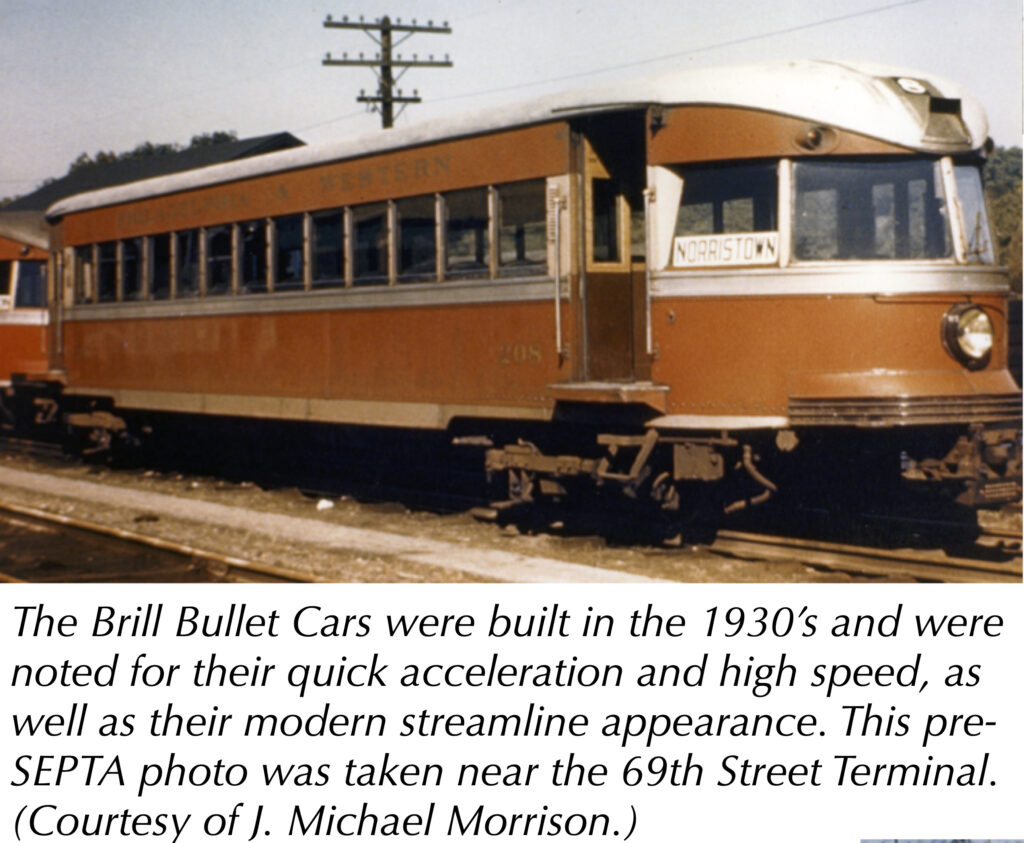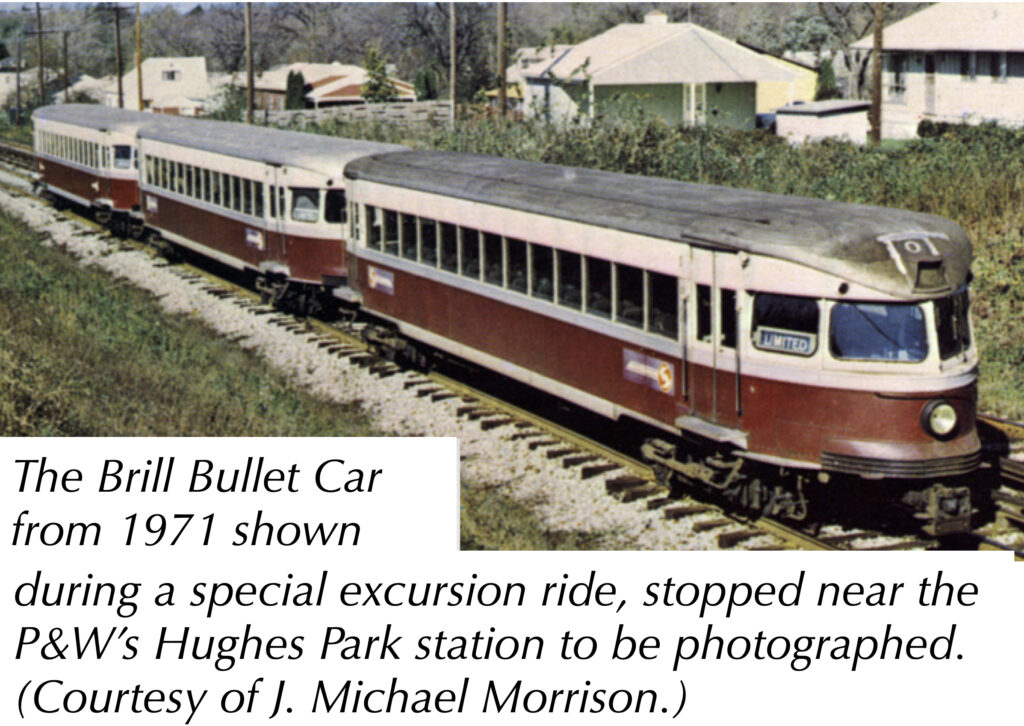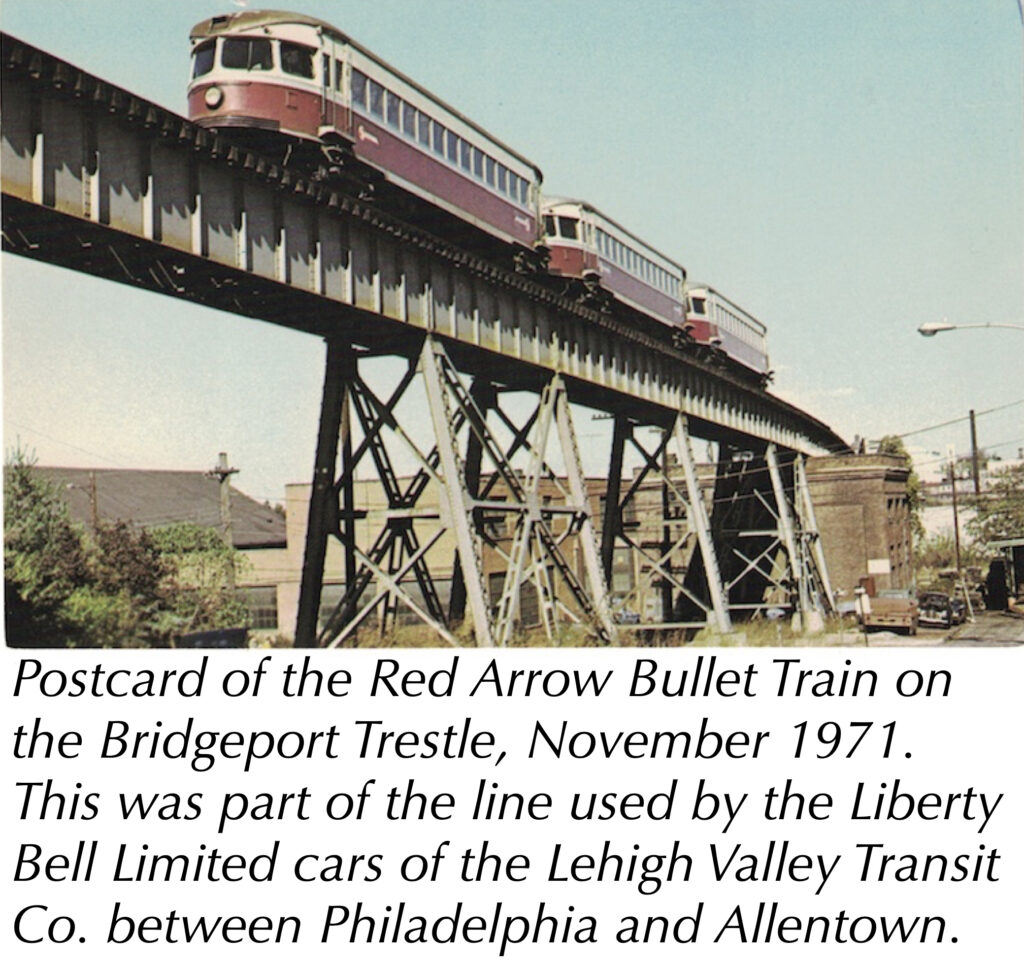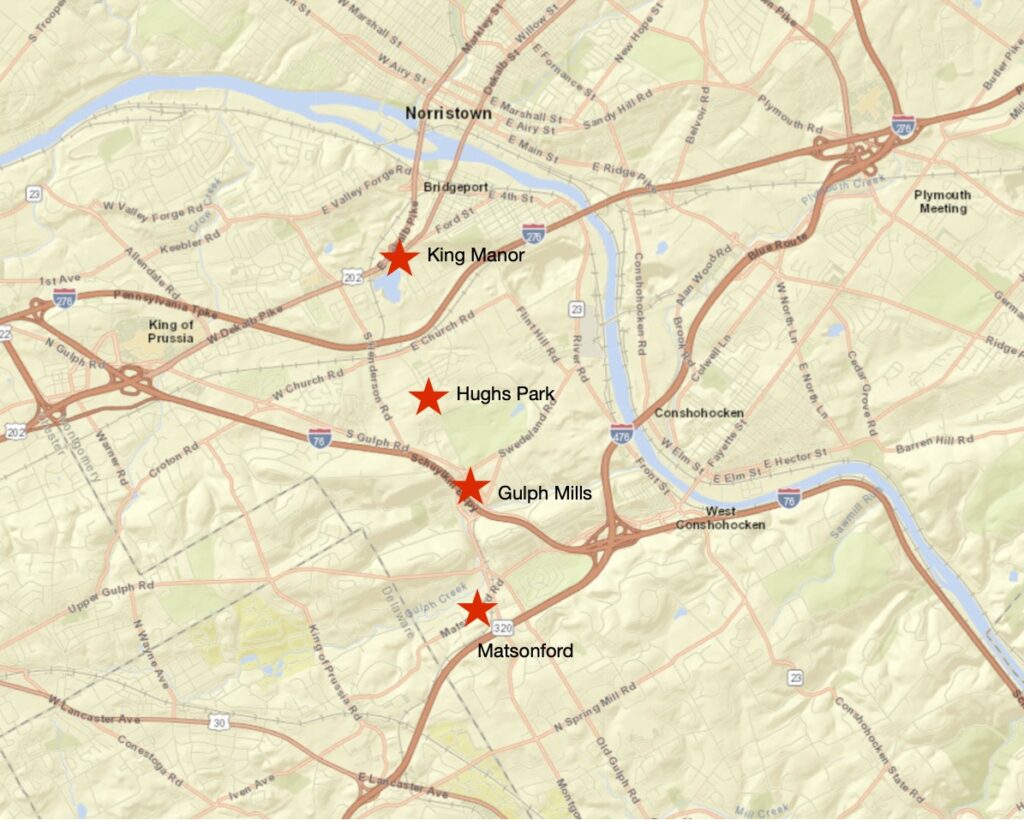Transportation continued to be an integral part of Upper Merion’s development in the early 1900s. Beginning life as the Philadelphia & Western Railroad, a standard-gauge electric interurban transit system was originally projected to extend much further west. The original line was built from 69th Street to Strafford in 1907, to compete with the Pennsylvania Railroad’s suburban local service. A branch from Villanova Junction to Norristown was added in 1912, and it turned out to be more important than the “main line” to Strafford, which was never extended further.
This extension changed the geography once again. The transit line would pass through Upper Merion with three stations. Taking advantage of geography, the train left grade and ran on a high embankment at the Matsonford stop. The train continued on a shelf above the highway and then took a gentle “S” curve, before calling at the Gulph Mills stop. After Gulph Mills, the line was back to grade and the cars entered the speedway portion of the line, almost all straight through to King Manor.
As the area around the village of King Manor developed, the King Manor Station was also a busy stop. From here, the line travelled through Bridgeport and onto Norristown. This new line was a unique line which had the elements of heavy rail, light rail, and commuter rail all wrapped into one. It had the high-level platforms and third-rail contact typical of heavy rail lines, with the closely-spaced stops, on-board fare collection, and generally a single-car operation found on light rail lines, with the general peak direction traffic and suburban setting associated with commuter rail.
At Norristown, the P&W connected with another interurban line, the Lehigh Valley Transit, which operated through service between 69th Street and Allentown.
Over the years, the line became faster and more famous. In 1931, Brill Bullet cars were purchased. This increased the travel speed of the line immensely. The Brill Bullets were famous, as they were the first railcars designed in a wind tunnel. For almost 60 years these cars, along with the Strafford cars that also ran along the line, served the P&W, which later became a part of the Red Arrow Lines and finally the SEPTA Route 100 line.




